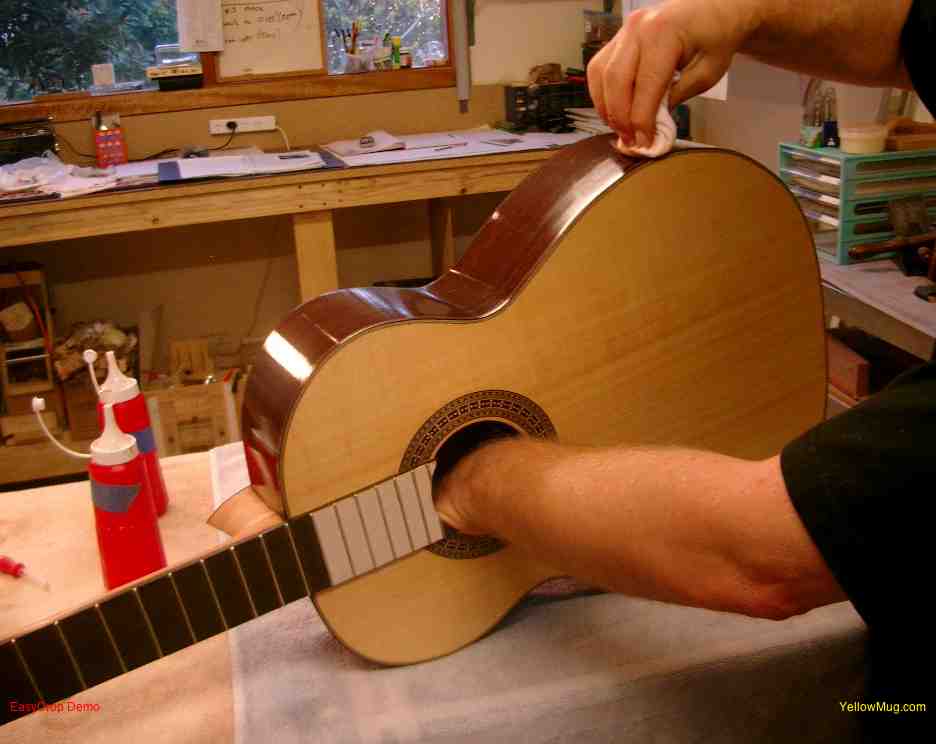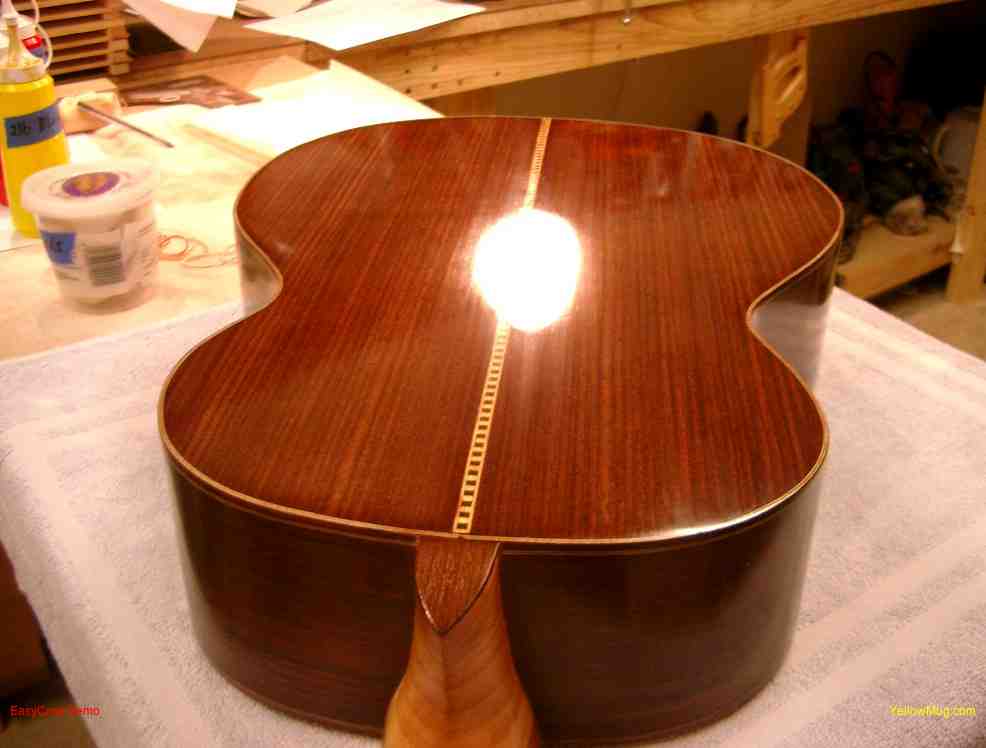Michael,
You are no doubt more versed in proper FP technique than I am. All I know is my method is working very well. Lots of Brazilian builders use finely ground coffee and shellac to make a slurry and fill the pores. It is the same concept: an inert filler as a bulking agent and a binder to hold it in place. A paste wood filler consists of a coarse, mineral bulking agent, a binder (whether acrylic for waterbase or oil varnish for oil base), and a pigment. My method dispenses with dissimilar materials, like oil varnish binder and shellac topcoat, and also does away with pigments. The tenacious bond of shellac holds the pumice in place. The pumice becomes as clear as glass and the amount of coloring you pick up from the wood tints the shellac to exactly the perfect color.
As an aside, there are some elements of furniture FP technique that do not transpose very well to instruments- the use of linseed oil comes to mind. Linseed oil is specified in just about all the old texts on polishing. It did not work for me, the difference possibly being a guitar is held against your chest and perspired upon, while a piece of furniture just has to look nice and withstand the occasional dusting. I have had to strip more than one linseed oil polished guitar when the film turned white at the points of contact with the player's body. Bad technique? Probably. But I have had no problems like this since switching to walnut oil, and I do use a fair amount of oil in the process.
|

